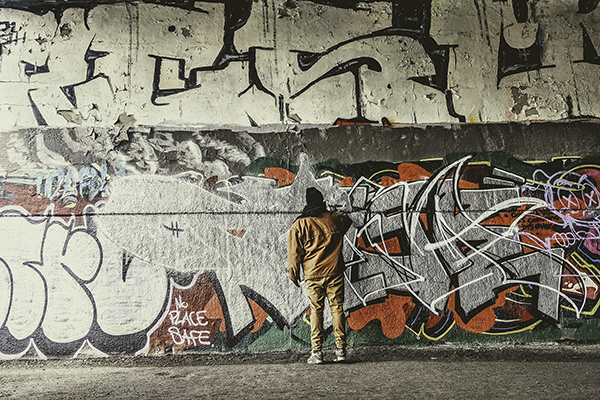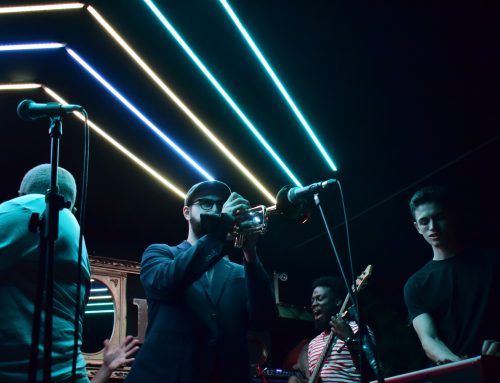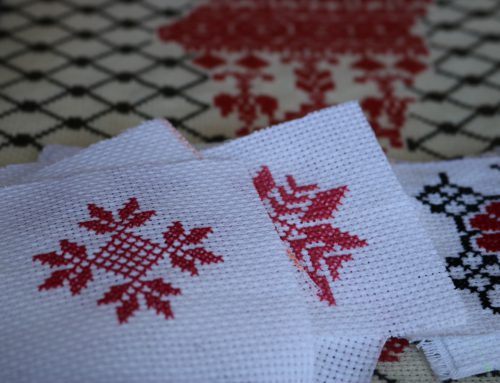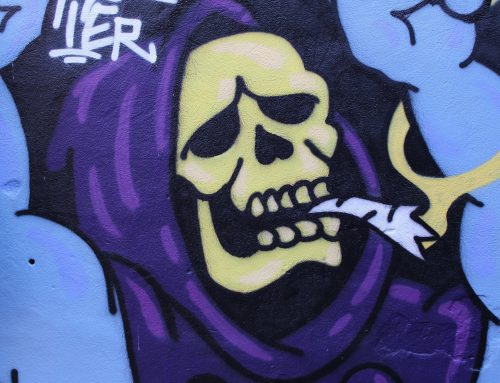BY Brittany Henriques & Virginie Ann
Montreal has been undergoing serious construction to replace its crumbling highways, including the ongoing work on the new $3.6-billion Turcot Interchange.
Ever since its re-opening in April 2019, graffiti has covered the large wall space it provides just below the McGill University Health Centre (MUHC) Hospital, next to Highway 15 northbound. It’s triggered a lot of anger.
“It’s totally vandalism. Like the evil part is a big part of the graffiti scene. It’s vandalism; you can’t say the opposite,” says Montreal graffiti artist Tuna.
At a press conference in November, Mayor Valérie Plante called it “ugly” and said she hopes to get it cleaned up as soon as possible.
Graffiti and tagging in Montreal remains a persistent problem.
According to sociologist and art historian Anna Waclawek, Montreal graffiti in its modern form dates back to the 1970s, when graffiti was considered “overwhelmingly politically oriented.”
Leading into the 1990s, graffiti culture strayed away from political messages and became all about scripture. Graffiti artists tend to want to tag and spray paint anywhere they can, according to Waclawek.
“Street art is more about sending a message. Graffiti is different. It’s more about putting your name out there as much as possible so people get to know you,” says Tuna.
Vandalism or art: The graffiti scene of Montreal. Video by Virginie Ann
Verdun borough councillor and former graffiti artist Sterling Downey compares this to advertising.
“Nike would want the best spot in the city to advertise their stuff, right? They want the most visibility. Well that’s exactly what graffiti artists want,” says Downey. “Location and visibility.”
Originally, graffiti artists may have been trying to send a message, but some experts think that’s no longer the case.
“The message is that there are new surfaces to write on and get your name up first. Writers are taking space in the urban realm,” says Waclawek.
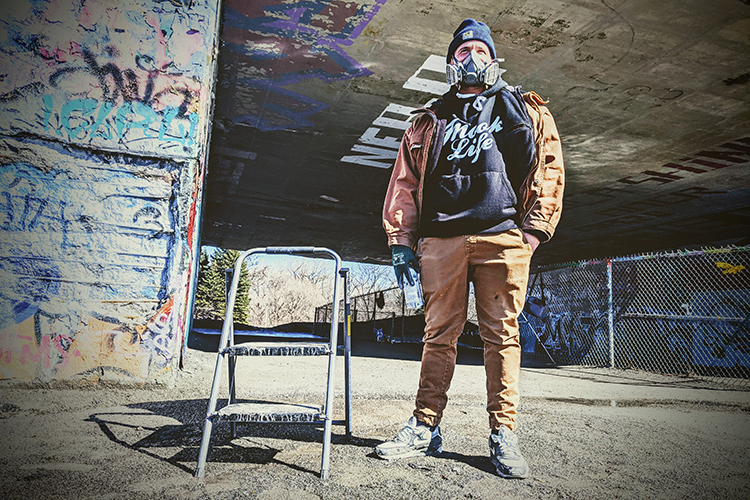
Graffiti artist Tuna says one of the best parts is getting your name out there and being recognized by other artists. Photo by Virginie Ann.
Graffiti artists should not be confused with street artists or muralists. The first have the simple goal of advertisement and fame, whereas the latter usually aim at sending a message or making their art visible to the masses. The one thing they all have in common is they put paint to walls on public or private properties around the city.
In her thesis, “From Graffiti to the Street Art Movement: Negotiating Art Worlds, Urban Spaces, and Visual Culture,” Waclawek quotes art historian Rosalyn Deutsche’s research that “public spaces are increasingly falling into private ownership – which makes a city the product of capitalist social practice.”
Street art can be recognized through messages of purposeful defiance.
“Space serves as a tool of thought and action; that in addition to being a means of production it is also a means of control, and hence of domination,” says Waclawek. “By working in liminal spaces, street artists contest capitalist environments.”
The stark contrast between street and graffiti artists created a rivalry that is still alive to this day.
“Muralists and graffiti artists don’t get along,” says Waclawek. “The reasons why are pretty obvious: muralists are taking over their space. Hence murals get tagged constantly. Writing was there first.”
ZEK is a well-known artist and pioneer on the Montreal graffiti scene. He is one of the founding members of ASHOP, the Montreal-based large-scale mural and urban contemporary art production company behind popular murals like “Our Lady Grace” in Notre-Dame-de-Grace and “Granny Graffiti” in the plateau.
But unlike most graffiti artists, Zek works with and gets along with muralists.
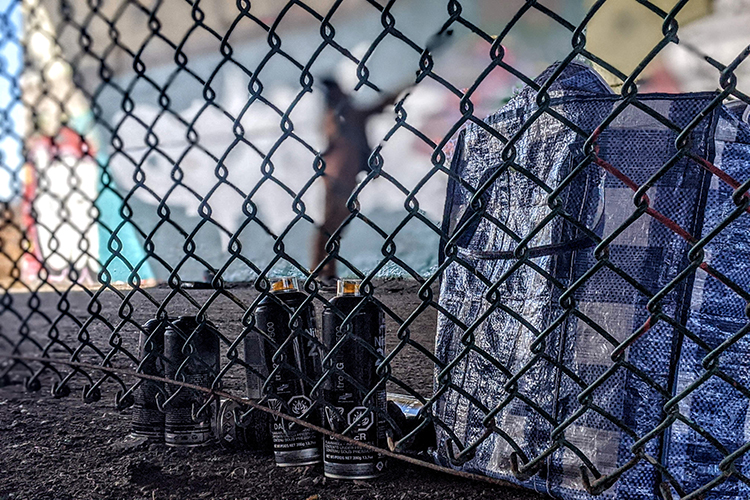
While the artists know the risks, most graffiti is rarely done in plain sight. Photo by Virginie Ann.
Downey says the emphasis on penalties isn’t enough to convince a graffiti artist to quit vandalizing property like the Turcot.
“Serious graffiti writers aren’t stupid, they weigh risk and rewards and know the consequence [of getting caught]. They want to get away with it,” he says.
The support for Montreal muralists has been growing for decades. Festivals like the MURAL Festival of Montreal give muralists the opportunity to express themselves. Graffiti artists like Tuna believe there should be similar support for graffiti artists.
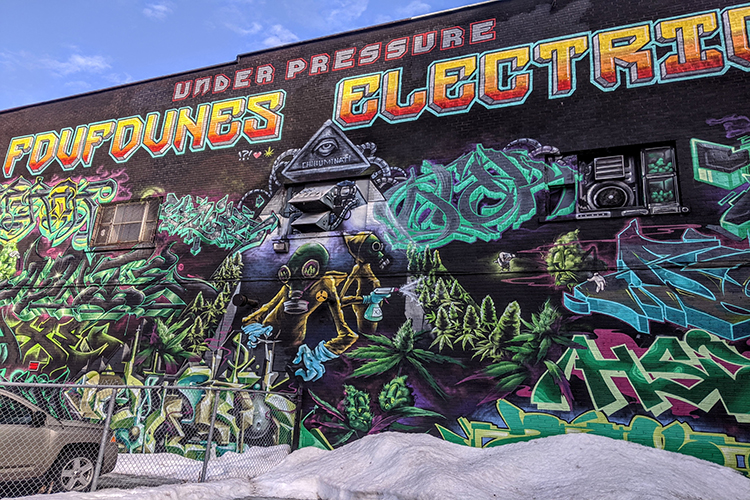
The Under Pressure Festival’s mission is to promote urban arts. Photo by Virginie Ann.
“The city does plenty to support street art, primarily with the goal of eradicating graffiti,” says Waclawek. “Public art and street art are two totally different things.”
Downey insists that in order to solve Montreal’s graffiti problem, officials need to understand it.
“No matter what measure they put in place, someone is going to use another tool,” says Downey. “In order to stop it, [governments] need to make it harder for them [to tag public spaces.]”
“Cleaning is one form of prevention,” he says. “[Graffiti artists] won’t risk wasting their paint if their work keeps getting cleaned.”
By consistently cleaning an area, this sends a message that the area is being monitored. This creates the notion of surveillance, says Downey.
The Turcot Interchange is provincial property, therefore city officials have very little power to enforce measures which would help prevent it being vandalized. City officials can arrest and fine graffiti artists who are caught vandalizing, but nothing more.
Downey points out the Turcot near the mega hospital is built to welcome people, and that also poses a major issue.
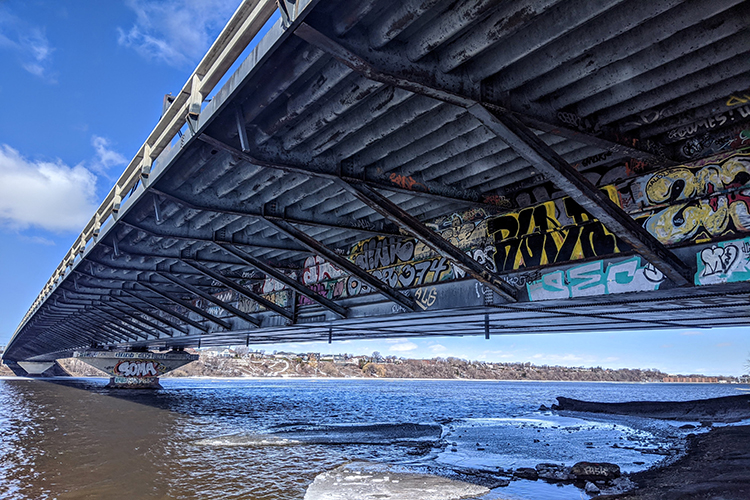
Massive infrastructures such as this bridge attracts a lot of graffiti artists, looking to impose their signature. Photo by Virginie Ann.
“If you notice, there’s easy access, and even metal railings, because if someone gets hurt, they want to avoid getting sued,” he says. “The way it’s built is inviting people to the highly visible area for graffiti.”
He says another option would be to plant a number of spruce, fir trees, or bushes. This would crowd the space, making it harder for graffiti artists to vandalize the area.
“Because it appears to be something new, they assume that the problem is also new but it isn’t,” says Downey, adding that prevention “is the only way to deal with it.”
